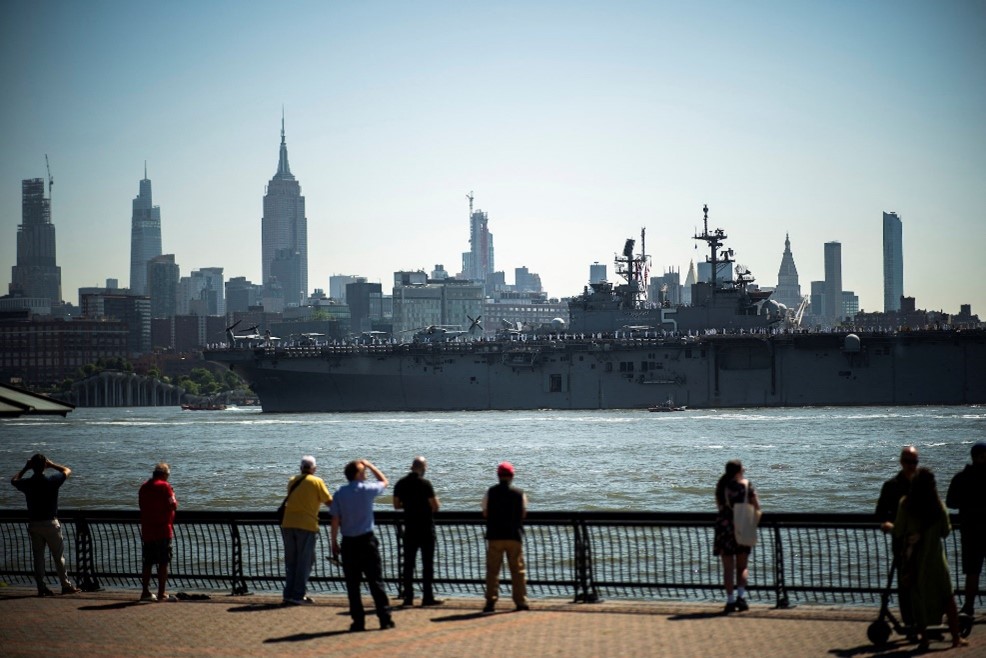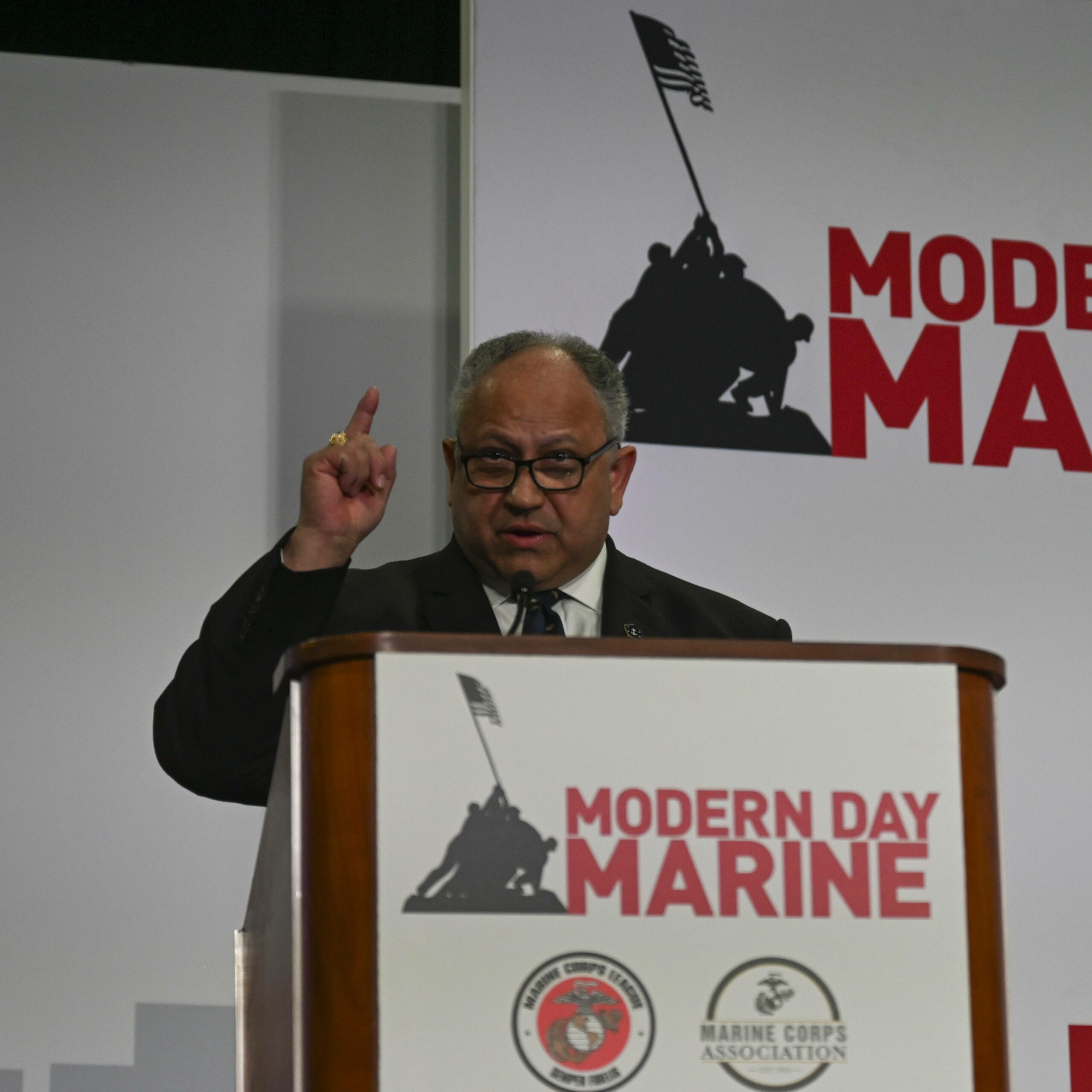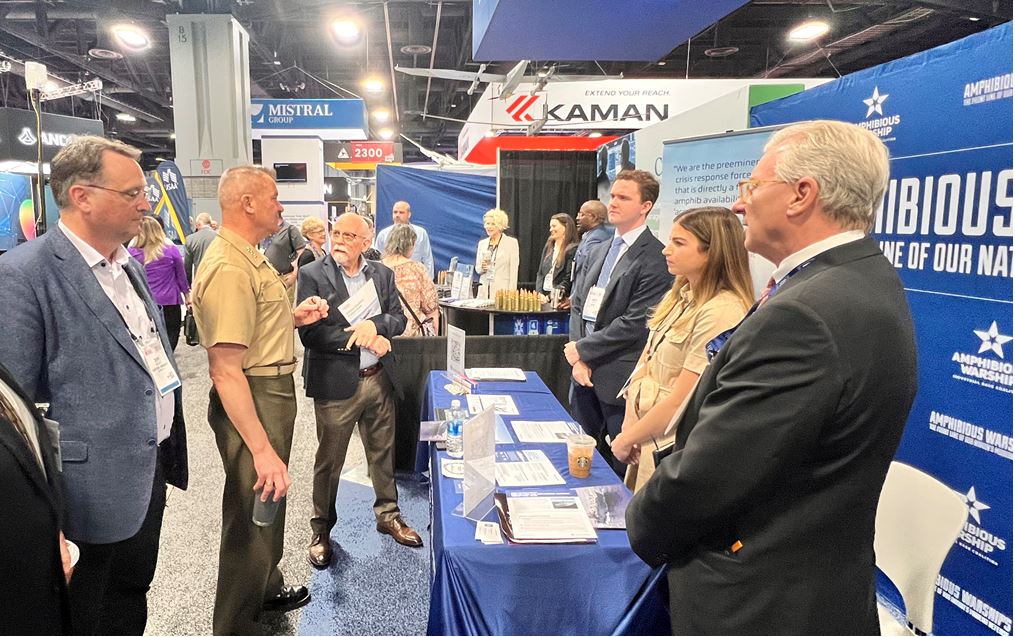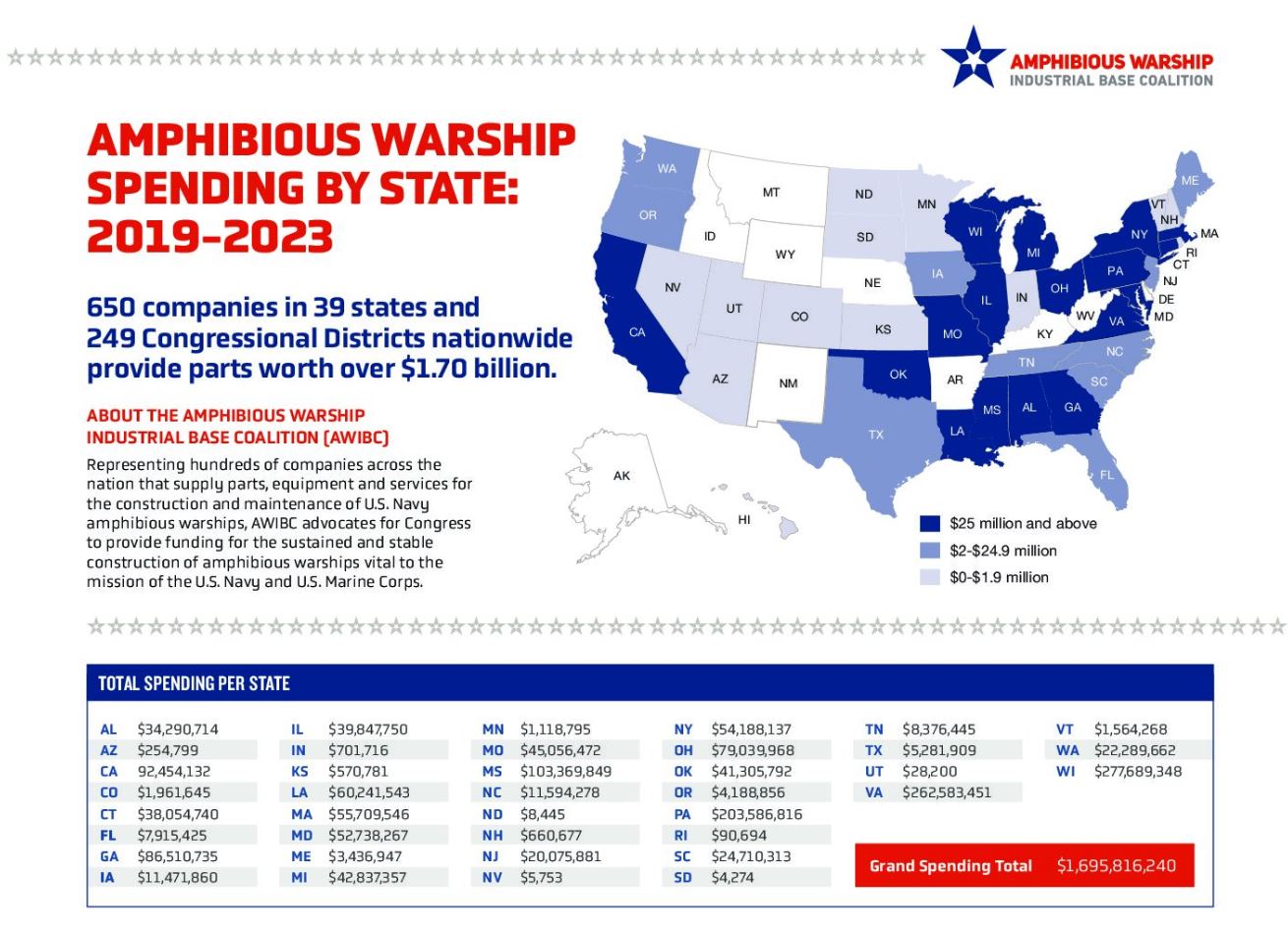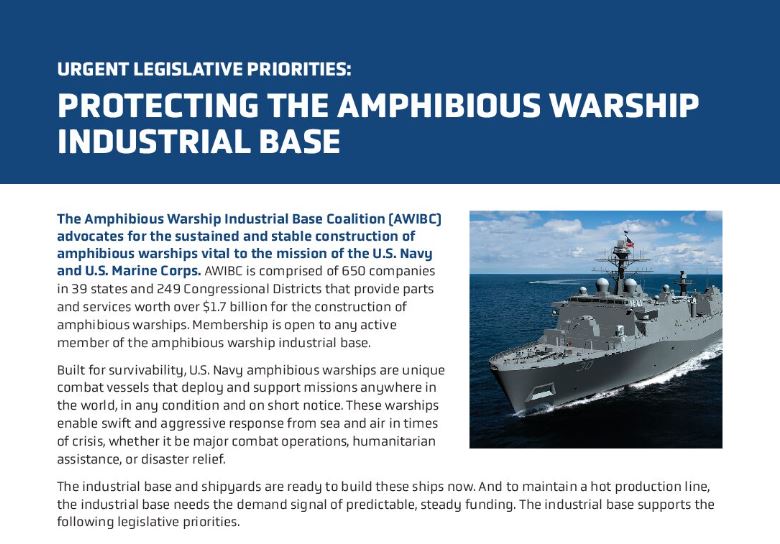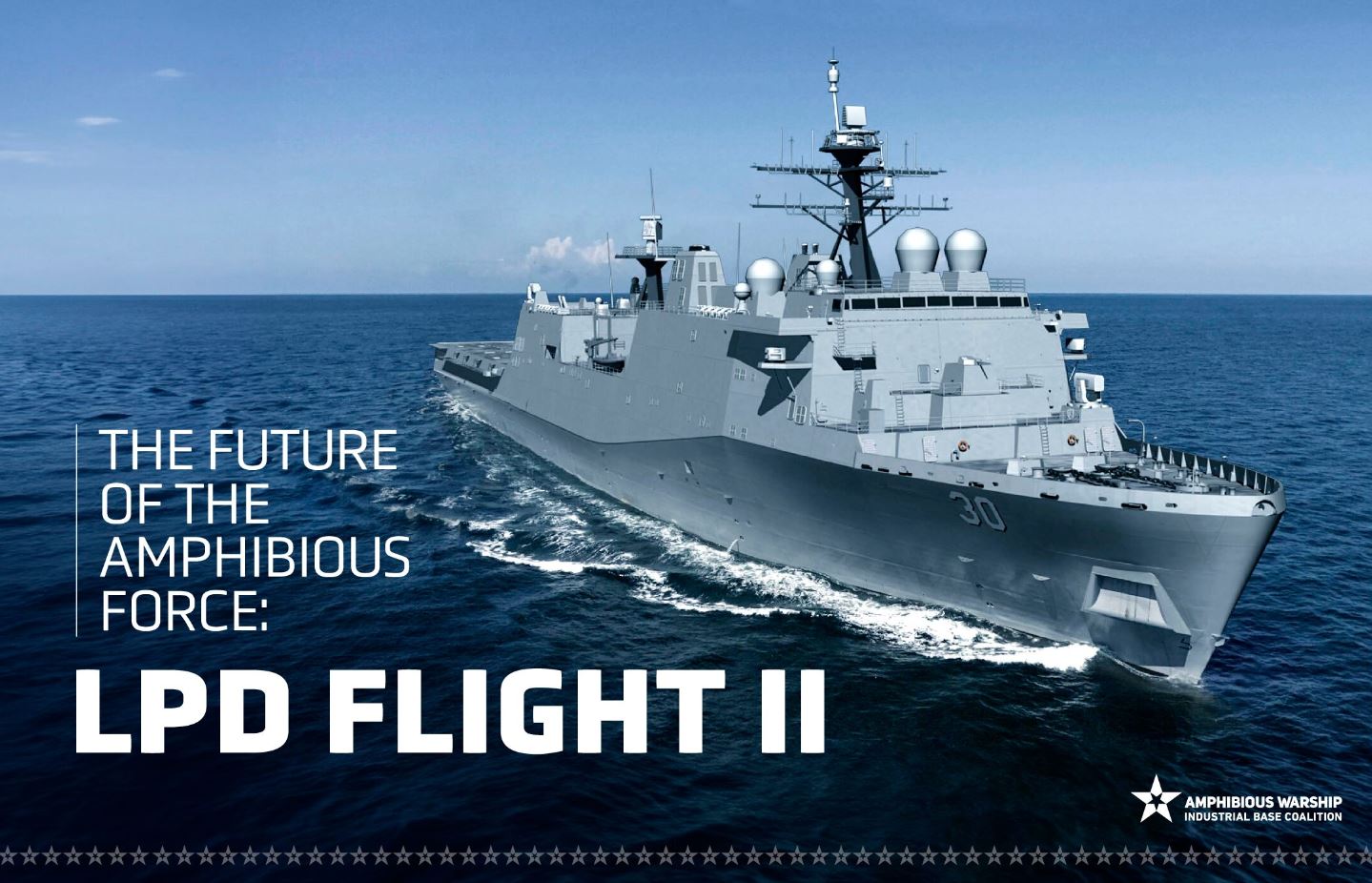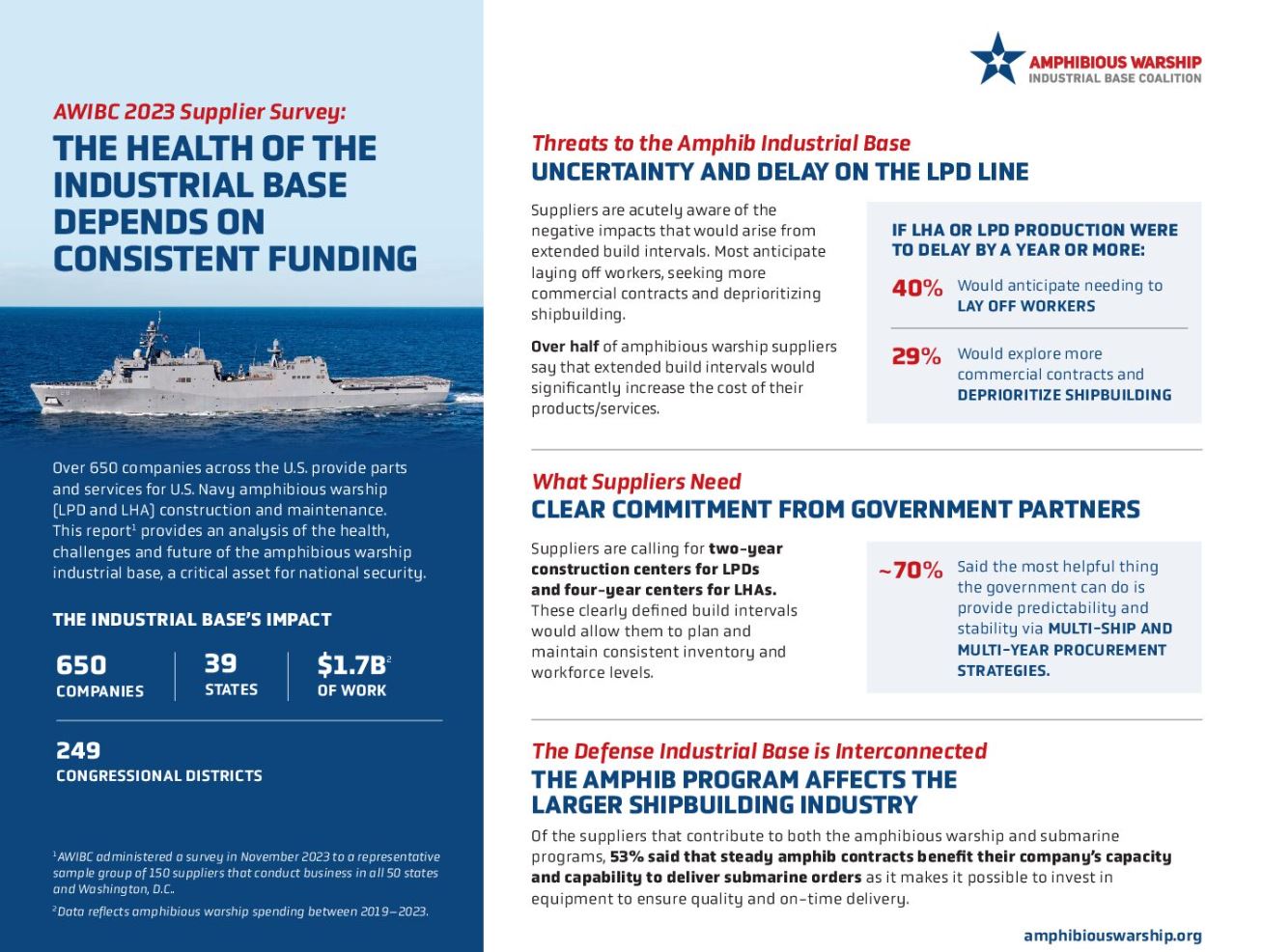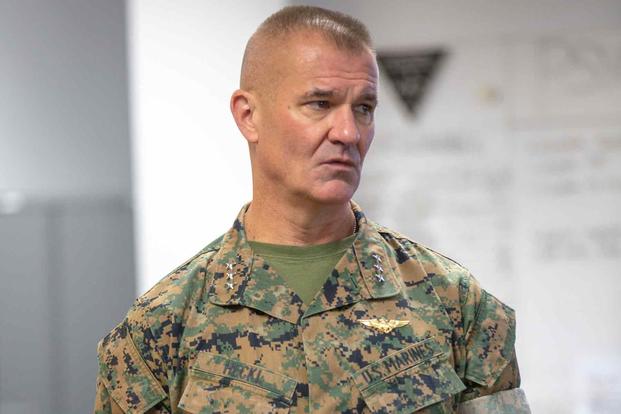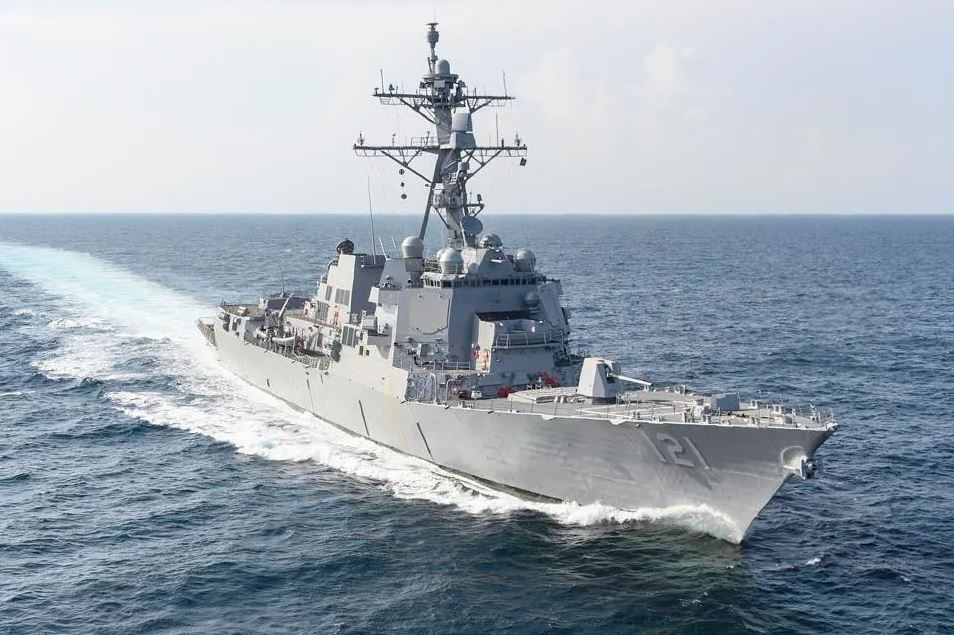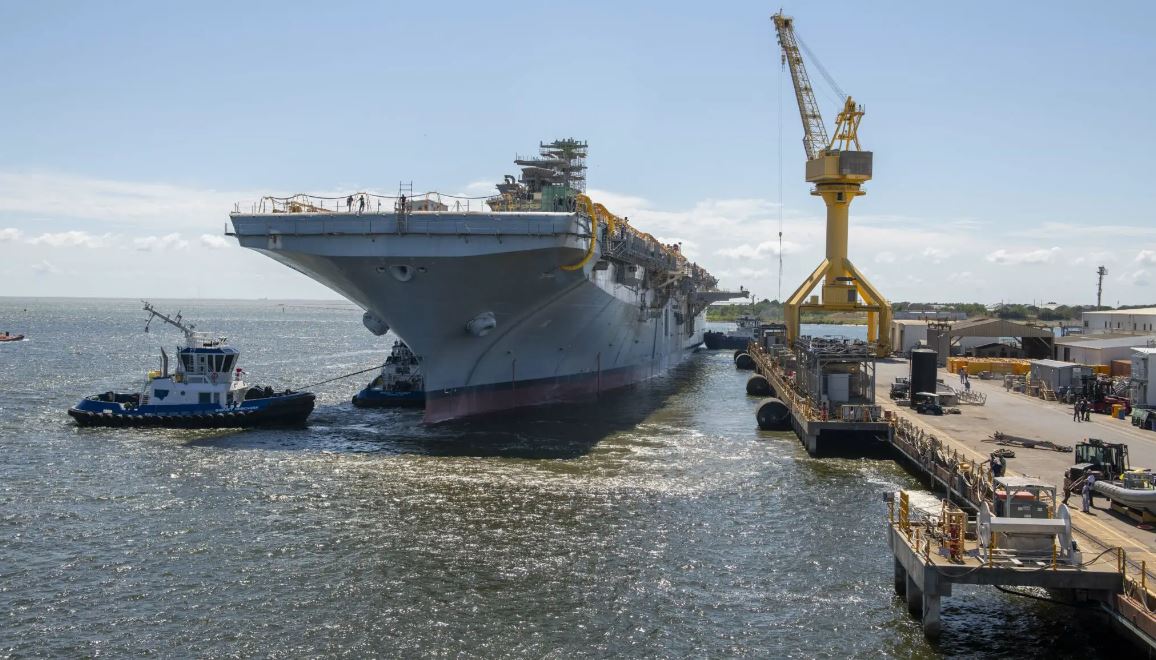Menu
NEWS & UPDATES
- All
- AWIBC News
- Congressional Forum 2024 Materials
- Fact Sheets / Studies
- Industry News
NYC Fleet Week 2024
June 10, 2024
New York ‘Fleet Week’ took place May 22-28th to celebrate those who serve at sea and provided residents of the tri-state area with the opportunity to see firsthand the capabilities of maritime service ships. Attendees had the chance to meet Sailors, Marines and Coast Guardsmen. US Navy amphibious warship USS Bataan (LHD 5) was one of the ships in port that attendees could tour. Vice ...
Learn More →
Gen. Eric Smith’s ‘State of the Marine Corps’ Remarks
June 10, 2024
During his remarks about the state of the Marine Corps at Modern Day Marine, Commandant Gen. Eric Smith expressed his support for amphibious warships, noting that he and Chief of Naval Operations Adm. Lisa Franchetti have both “locked shields” on 31 amphibs with an 80% readiness rate. “It’s a written, signed document between the two service chiefs that frankly outlasts us,” he told reporters, while ...
Learn More →
SECNAV Announces Name of LHA 10
June 10, 2024
Secretary of the Navy Carlos Del Toro announced the future America-class amphibious warship LHA 10 will be named USS Helmand Province (LHA 10). Helmand Province commemorates the multiple U.S. Marine Corps operations that took place in Afghanistan’s Helmand Province as part of Operation Enduring Freedom (OEF).
Learn More →
Modern Day Marine Recap
June 10, 2024
The Amphibious Warship Industrial Base Coalition (AWIBC) exhibited at this year’s Modern Day Marine Conference that took place Tuesday, April 29th – Thursday, May 1st at the Walter E. Washington Convention Center in Washington, D.C. We had the chance to network with existing members and talk with representatives from companies who are interested in joining the coalition. The event included remarks from USMC leadership, and ...
Learn More →
2024 Legislative Ask Sheet
March 1, 2024
Click to view AWIBC’s 2024 Legislative Ask Sheet.
Learn More →
Gen. Heckl explains need for additional amphibious warships to combat issue readiness.
January 30, 2024
Concern surrounding readiness of the Navy’s amphibious ships is affecting the Marine Corps’ ability to deploy Marines globally in a timely manner. The Marine Corps is concerned that its expeditionary units – including amphibs – could be in a position where they cannot meet the needs of a new crisis given the current state of the US Navy’s amphibious ships. The lack of amphibious ship ...
Learn More →
The Lexington Institute’s Loren Thompson explains the benefits of block-buys, pointing to the importance of stability and strong demand signals in keeping up with China’s production of warships
November 30, 2023
The current administration’s proposed 2024 budget does not account for the block-buy of warships, negatively impacting the workforce and supply chain. Thompson explains how the U.S. must be more efficient in spending money on defense as Chinese naval production continues to evolve. To keep up with China’s production levels and ensure international stability through a strong forward stance, the industrial base needs block buys which ...
Learn More →
Ingalls Shipbuilding Successfully Launched US Navy’s Third America-class Amphibious Warship USS Bougainville (LHA-8)
November 8, 2023
On September 9th, USS Bougainville was transferred from land to a floating dry dock, where the Ingalls team completed the final prep work for launch. On October 6th, USS Bougainville successfully launched from Ingalls’ floating dock into the Pascagoula River. USS Bougainville will be a crucial addition to the amphib fleet, bringing new innovations that help the Navy and Marine Corps deliver on missions around ...
Learn More →
Sign Up For Our Email List
Stay up to date with AWIBC and industry news by signing up to receive our email alerts.

